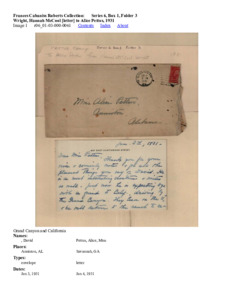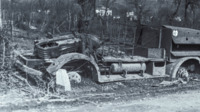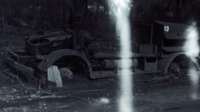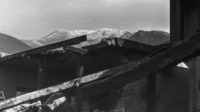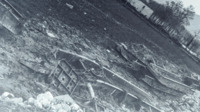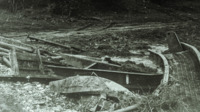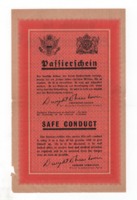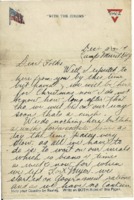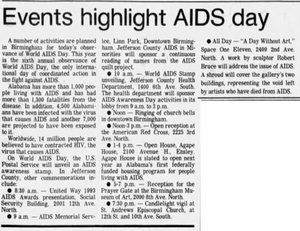
Browse Items (6630 total)
Sort by:
-
Wright, Hannah McCool [letter] to Alice Pettus, 1931
A single letter of correspondence from Hannah McCord Wright -
Wrecked German Command car 1 mi S. Cassino.
Photograph number 447. This photograph shows a wrecked German Command vehicle located approximately one mile south of Cassino, Italy. The title for this image was found in Major Edwin D. Burwell Jr.'s list of photographs. -
Wrecked German Command car 1 mi S. Cassino.
Photograph number 446. This photograph shows a wrecked German Command vehicle located approximately one mile south of Cassino, Italy. The title for this image was found in Major Edwin D. Burwell Jr.'s list of photographs. -
Wreckage near Hq. Mignano.
Photograph number 455. This photograph shows a damaged building near the headquarters in Mignano, Italy. The title for this image was found in Major Edwin D. Burwell Jr.'s list of photographs. -
Wreckage AF Bridge same place.
Photograph number 216. This photograph shows wreckage near Venafro, Italy. The title for this image was found in Major Edwin D. Burwell Jr.'s list of photographs. -
Wreckage AF Bridge same place.
Photograph number 215. This photograph wreckage near Venafro, Italy. The title for this image was found in Major Edwin D. Burwell Jr.'s list of photographs. -
World War II safe conduct pass.
The pass notes, "The German soldier who carries this safe conduct pass is using it as a sign of his genuine wish to give himself up. He is to be disarmed, to be well looked after, to receive food and medical attention as required, and to be removed from the danger zone as soon as possible." -
World War I diary of Don Betsinger.
Betsinger served in the U.S. Army during World War I. Born on March 5, 1900, he was from Chicago, Illinois and enlisted as a private in the 12th Field Artillery in 1917. He embarked for France from Hoboken, New Jersey in early January 1918. The diary appears to include letters to his family and is missing many pages. The entries include opinions about the war, observations of fellow soldiers, and experiences in combat, including discussion of heavy shelling and mustard gas during the Battle of Belleau Wood in June 1918. Many of the descriptions are graphic in nature. Betsinger survived the war and later moved to Monte Vista, Colorado, where he operated the Triangle Tourist Camp in the 1940s. His wife, Elda Aden Betsinger, was a public school teacher. He died in San Diego, California in January 1980. -
World War I diary of Archie Duncan Shannon.
Archie Shannon was a farmer who served in Company G of the 1st Pioneer Infantry in World War I. Shannon was born in Limestone County, Alabama on November 19, 1891, and at the time of his draft registration on June 5, 1917, he lived in Ardmore, Tennessee. Shannon reported for military duty on September 18, 1917 and entered training at Camp Pike, Arkansas.
This diary covers Shannon's experiences in the U.S. Army from July 1, 1918 to July 7, 1919. He describes his journey to France and details everyday life as a soldier, especially the discomforts of life on the front in both the Marne and Verdun sectors. Shannon discusses bathing and sleeping arrangements, gas masks, air raids, and the terrible sights of war-torn France while repairing roads and burying dead soldiers. Shannon includes descriptions of his involvement in the Meuse-Argonne Offensive, noting the continuous shelling, gas attacks, and miserable weather conditions. He also describes his company's reaction to the Armistice, writing, "Many happy hearts in our company everyone seems to take life anew."
Shannon spent the rest of his World War I service in Belgium, Luxembourg, and Germany, and he returned to the United States on July 7, 1919. A list of soldier names and hometowns is recorded in the back of the diary. Shannon died on May 20, 1969 and is buried in Gatlin Cemetery in Ardmore, Alabama. -
World AIDS Day newspaper clippings
1990s newspaper clippings about World AIDS day observances in Alabama.
